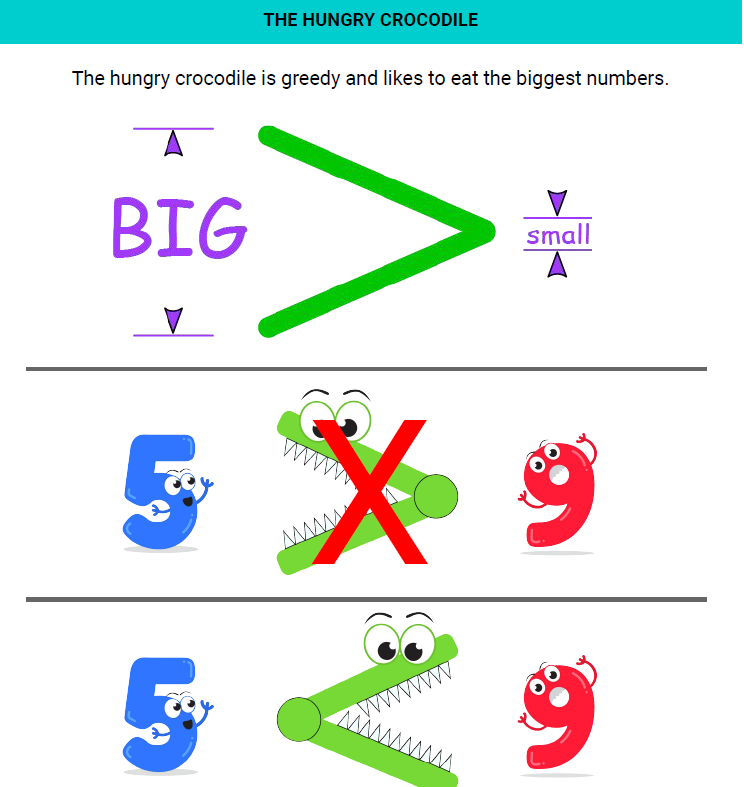
Thanks Craig for clearing that up fore me. >similar to extra line slanted at the same >equal can appear as (usually in plain text), Using the symbol indicates that the number is greater than or equal, that means that the number to the left of the sign is greater than or equal to the. >the same forms as occurs backwards (like > >It is easy to confuse "">" with similar symbols, but

You might say it is a "universal language." If you see symbols that look similar to something else but not quite like it, it might be something different. Nevertheless, mathematics symbols are well-accepted in most places. Eg, less than or equal can appear as <= (usually in plain text), similar to <, and with the extra line slanted at the same angle as the bottom of the <. Note also that and other forms can look a bit different. Eg, "A is a subset of B" is written with a symbol similar to " does), it occurs with lines under it (signifying possible equality), and it can occur with slashes through it (signifying that it is NOT a subset). It is easy to confuse "" with similar symbols, but the meaning is totally different. Spanish speakers say "ocho menos tres" instead of "eight minus two" but they still write it "8-3" as we would.

Mathematics is relatively standardized in many languages. I don't know that symbols other than "" are used for this purpose in other countries, but I do doubt that they would. When the fractions have the same denominator it is very simple to make the comparison, only the numerator values should be compared.A A, so that they may become switched. → Comparison of fractions with the same denominator →įor the comparison of fractions it is advisable to have everything in the form of a fraction, therefore, for mixed fractions the corresponding operation must be done to convert to a fraction. Learn more about: “ Convert decimals ↔ fractions”. Some people prefer to make the comparison in the form of fractions, therefore, it is necessary to convert decimals to fractions.
Assuming that you want to compare 12,439 and 12,434, by observation we see that the largest digits are equal (1 ten in 12,439 and 1 ten in 12,435), therefore, we move on to the next largest digit, since they are the same again (2 units in 12,439 and 2 units in 12,434) it is necessary to continue lowering position until finding different digits, in this case they are in the thousandths position with a position value of 9 thousandths in 12,439 and 5 thousandths in 12,435, as 9 > 5 deduces that 12,439 > 12,434. Assuming that you want to compare 13,643 and 4,849, first the comparison of the largest digit that corresponds to 1 ten in 13,643 and 4 units in 4,849 is made, since the tens are larger values than the units it is possible to quickly deduce that 13,643 > 4,849. Assuming that you want to compare 0.56 and 0.43, first the comparison of the largest digit that corresponds to 5 tenths in 0.56 and 4 tenths in 0.43 is made, as 5 > 4 it follows that 0.56 > 0.43. In this case it is important to know the position value of the numbers, considering that the number on the left is always larger than the number on the right. Using the ≥ symbol indicates that the number is “ greater than or equal”, that means that the number to the left of the sign is greater than or equal to the number on the left.Ī "less than" symbol is represented by the " -2 15 > 12: Fifteen is greater than twelve. Important: The opening always points to the largest element, and the tip or closure, to the smallest. 3 3.Remembering the Greater Than Sign & Less Than Sign Mometrix 4 4.Greater Than and Less Than Symbols (Definition & Examples) Byju’s 5 5.Equal, Less and Greater Than Symbols Math is Fun 6 6.Math Symbols: Greater Than, Less Than, and Equal Smartick 7 7.How to Remember Greater Than and Less Than Symbols. To be able to identify in a simple way it is considered that the opening of the sign expresses that the number is greater, in this case it would be the numbers on the left and the tip or closing of the sign indicates that it is smaller, corresponding to the number that is on the right of the sign.  5.2 Comparison of fractions with different denominatorĪ “ greater than” symbol is represented by the “ >” sign, it is a mathematical element to indicate that the number to the left of the sign is greater than the number to the right of it.
5.2 Comparison of fractions with different denominatorĪ “ greater than” symbol is represented by the “ >” sign, it is a mathematical element to indicate that the number to the left of the sign is greater than the number to the right of it. 
5.1 Comparison of fractions with the same denominator. 2.1 How do you read the sign less than?. 1.1 How do you read the sign greater than?.








 0 kommentar(er)
0 kommentar(er)
